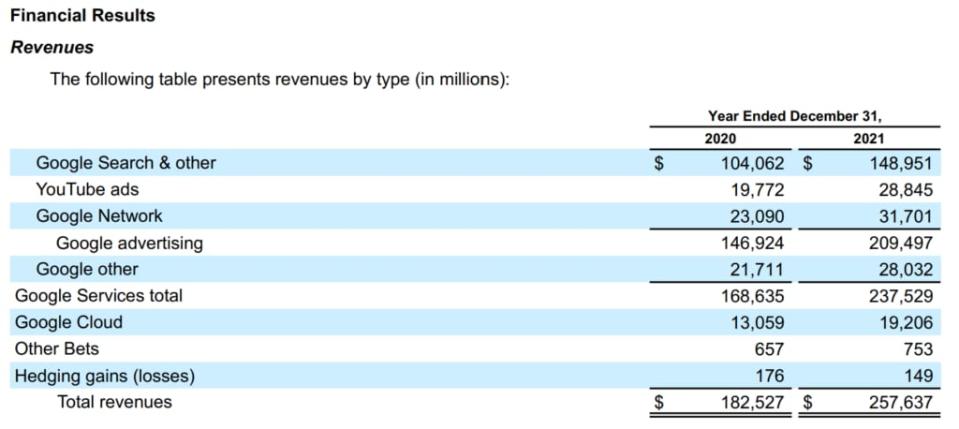How YouTube Is Winning the Fight for Content Creators | Charts
YouTube is coming out on top as more media companies battle for creators.
By working directly with creators and sharing ad revenue over the last 14 years, YouTube has created a successful model that allows any creator to make a living — and then some, for those making millions of dollars — just by being a YouTuber. Ultimately, this has significantly propelled YouTube’s ad business and helped it expand into other areas, such as live streaming and commerce.
“Revenue sharing programs are successful, because they’re gamifying the compensation of creators,” Flynn Zaiger, CEO of digital marketing agency Online Optimism, told TheWrap. “By paying creators over half of the ad revenue earned from their content, YouTube helps to retain creators longer.”
Content creators are really at the heart of YouTube’s business. Over the years, the Google-owned video-hosting platform has become a place where people learn to cook, stream curated music or tune into live events. The platform boasts more than 2 billion monthly global users, and a staggering 500 hours of video gets uploaded every minute. This translates to a billion hours of YouTube videos viewed every day globally.
The key difference is that YouTube’s partner program is based on revenue sharing on video ads, compared to a creator fund on other platforms that has a capped amount of money to distribute. Created in 2007, YouTube’s partner program offers a 55% split in ad revenue to creators and keeps the remaining 45% — with no limit on how much a creator can earn. This year, YouTube said the number of channels worldwide making more than $10,000 a year is up 40% year-over-year, showing that emerging creators are joining in, as well.
“YouTube has been incredible at fueling the creator economy,” Victor Potrel, VP of platform partnerships at digital studio TheSoul Publishing, said. “This approach to revenue sharing has been key in positioning YouTube as the leader in the online video space.”
YouTube said it has paid creators more than $30 billion between 2017 and 2020 — $7.5 billion annually on average — whereas its rivals are trailing behind by investing hundreds of millions to several billion into paying creators. TikTok and Snap have creator fund programs whose 2021 payouts ranged from $250 million (Snap) to $200 million (TikTok). Facebook and Instagram parent Meta declined to provide 2021 payout amounts, but it has committed to paying more than $1 billion to creators by end of 2022.

“YouTube has a deep history of paying creators directly — at scale,” a YouTube representative told TheWrap. “Nearly 15 years ago, we launched the YouTube Partner Program, a first-of-its-kind open monetization program, where anyone who qualified could join and start making money. In fact, we share over half of the revenue generated with creators. Today, YPP continues to be one of the largest drivers of the creator economy in the world.”
Although YouTube didn’t provide an annual breakdown of payments from 2017-20 nor figures for 2021, the company appears to have injected more cash into paying creators than Facebook, Instagram, Snap and TikTok combined. Many of these players haven’t publicly shared how much they’ve paid to creators over the years, and many of their creator funds are newly launched within the last few years.
On other social sites, a major downside for creators is the limited earnings available as more creators join the pool, since companies generally pull from fixed budgets for these programs. Now some platforms, such as Instagram TV and Snap stories, are beginning to introduce revenue-sharing options for creators as they follow in YouTube’s footsteps to attract and retain top talent.
“Every platform has their value proposition for the creator economy,” Ryan Detert, CEO at influencer marketing company Influential, said. “YouTube has undoubtedly paid out the most money over the years from their ad-supported [program].”
This approach is paying off for YouTube. After all, if creators make more, so does YouTube — a win-win for everybody. Even after emerging from the pandemic boom through 2020, YouTube’s ad revenue has skyrocketed from some $15 billion in 2019 to more than $28 billion in 2021. Last year, YouTube/Google’s parent company, Alphabet, reported an annual revenue surpassing $257 billion, increasing 41% from the previous year, largely driven by its cloud and web services.

A Google advantage
In addition to partnering with creators far longer than many of its younger rivals, YouTube is backed by a massive tech giant, Google/Alphabet. In 2006, Google acquired YouTube for $1.65 billion and started expanding overseas, launched the mobile app and introduced in-video ads the following year. Many recognized influencers and content creators today got their start on YouTube through its partner program, which has helped drive the platform forward as a major content player.
“YouTube has evolved a modern approach to how they see creators… Creators are essentially businesses,” Ali Fazal, VP of marketing at creator management platform GRIN, told TheWrap. “Through a lot of YouTube’s efforts, whether that be VidCon or recent perks that have been announced like profit-sharing, they have consistently made efforts to help creators grow as businesses and that’s why it’s well-known as a network where creators can make a living and build a brand.”

YouTube’s features also give creators certain advantages. Raquel Pinto, digital PR expert at Limelight Digital, is also a TikTok creator and said YouTube helps creators get exposure because the platform is optimized for search. Since YouTube has been around longer than other sites, she said, its algorithm is more fine-tuned to deliver content to an intended audience.
“It very much operates as a search engine,” Pinto said. “By optimizing your video’s title, thumbnail and description… you will be able to increase your chances of being pushed out by the platform. YouTube videos also rank on Google, which means that if you create a video that is highly valuable, you will be able to reach a top spot in Google.”
From a brand perspective, YouTube is also a resource for building businesses as there’s no limit of links in the description. This provides a place for creators to promote themselves, whereas in short-form video content, description space is more limited.
“The longevity of a YouTube video far outweighs that of an Instagram post or TikTok,” Pinto added. “Plus, given that the videos are much longer in terms of time, this gives the creator a chance to go into deeper detail about a brand’s product or service and make it resonate more with the viewers.”
This is part 1 of a WrapPRO series on the Battle Over Content Creators.
Wednesday: How YouTube Is Winning the Fight Over Content Creators | Charts
Thursday: Why YouTube – With Its Deep Pockets – Isn’t the Perfect Fit for All Creators
Friday: How Social Media Platforms Are Racing to Win the Short Video Market Away From TikTok

